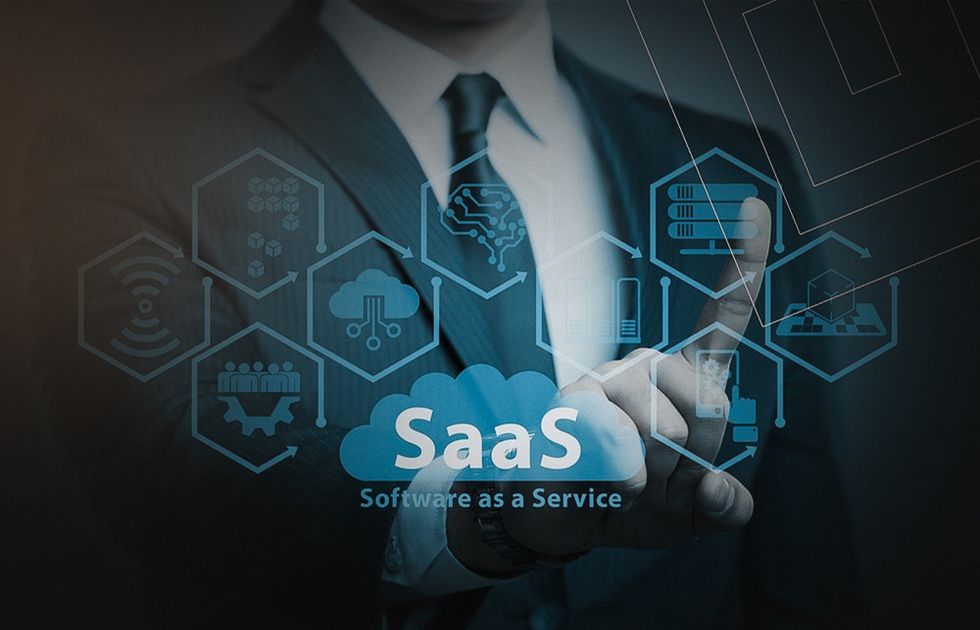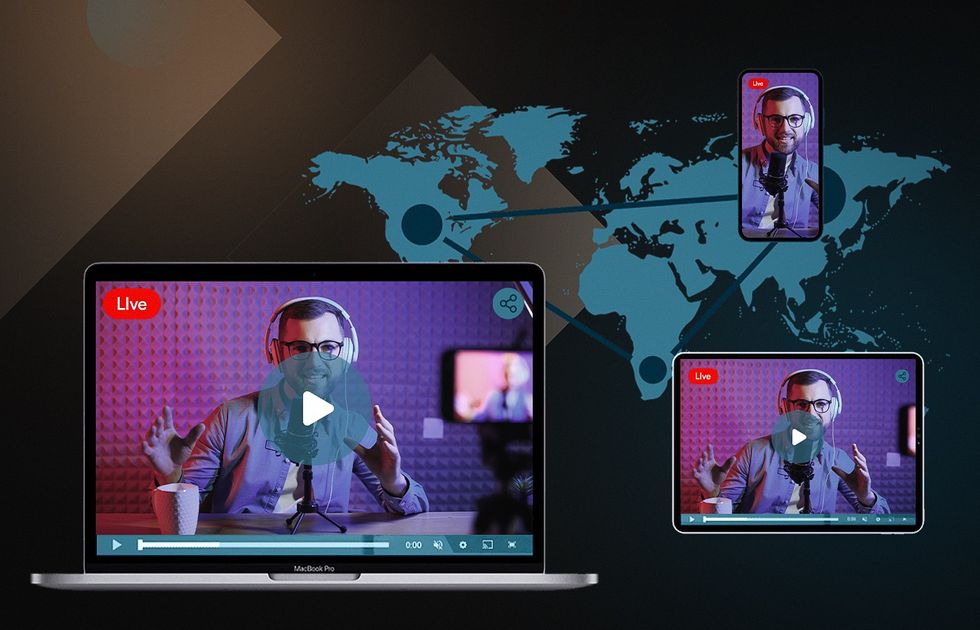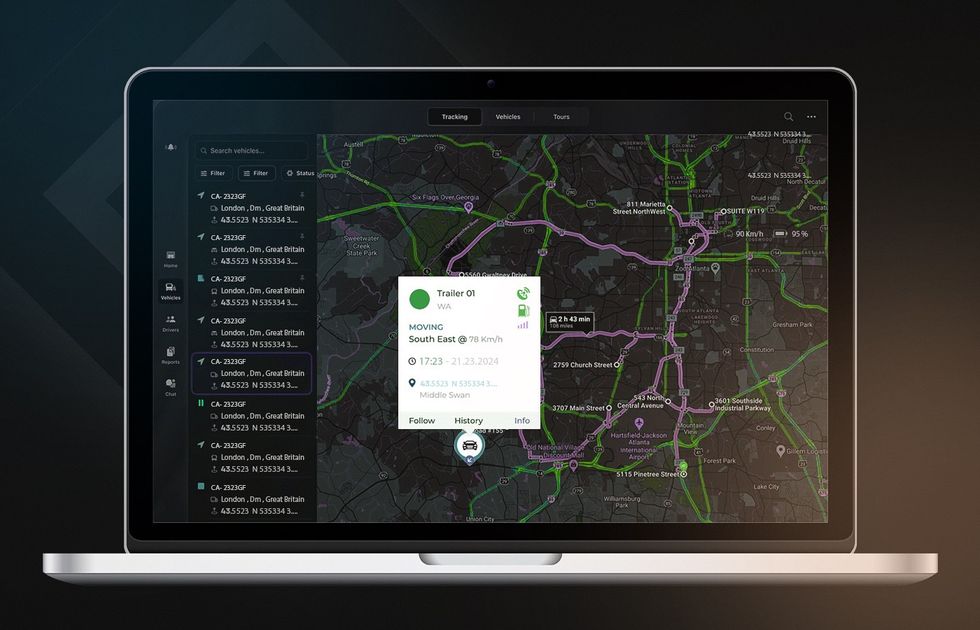
- SaaS app development involves creating software applications hosted by a third-party provider and accessed over the Internet.
- The SaaS approach offers benefits such as scalability to accommodate changing needs, cost-effectiveness with subscription-based pricing models, and accessibility for remote access and collaboration.
- Key features of SaaS apps include multi-tenancy for shared access, automatic updates and maintenance, and integration capabilities for seamless connectivity with other systems.
More and more enterprises are looking to create a SaaS application. The evolution of cloud computing offers an ever-improving and affordable infrastructure that supports a scalable multi-tenant software architecture.
As of 2023, the Software as a Service (SaaS) market is valued at around $197 billion, with projections indicating it will surge to $232 billion by 2024. SaaS dominates the public cloud services sector, contributing to about two-thirds of its revenue.
Whether you are a startup or enterprise business developing SaaS applications, you need to understand all building aspects to allocate engineering resources and budget correctly. Acropolium can handle all stages, from preliminary consulting to building SaaS MVP application, its testing, release, support, and scaling.
As Acropolium’s Founder Oleksii Glib puts it,
“SaaS has recently gone to the extreme, where you have every little action done by a single atomic SaaS application. This creates a mess, as tracking who you pay, how much, where and what for becomes really hard. The market will demand the SaaS platforms to either expand and add new features to their offerings, or provide centralized billing & management dashboards for multiple products — or to do both.”
What is a SaaS app? What are its key features and challenges? How to create SaaS application? Read on to find out all the important aspects of Software-as-a-Service development and IT outsourcing.
What Is SaaS Application Development
What is SaaS development? It is creating systems hosted and maintained by a third-party provider. Instead of installing software locally, users access the app over the internet on a subscription basis.
Let’s overview the key characteristics:
- Users pay a subscription fee to access the software, typically on a monthly or annual basis — only for the features and resources they use.
- Applications are accessible from any device with an internet connection, from different locations or devices.
- SaaS applications easily scale to accommodate growing numbers of users and data without significant infrastructure changes.
- The provider manages updates, ensuring that users always have access to the latest features and security patches.
- Companies customize and configure the software to meet their specific needs without custom development.
SaaS Application Development Trends
The SaaS market maintains stability amid market challenges and remains a preferred choice for less risky investments. The sector consistently accounts for 27% of all deals. But what are the most promising areas in the SaaS capital market? Generative AI shows a 271% increase in YoY funding.

Below are ten SaaS market trends you might want to track in 2024.
- AI/ML adoption
- Global collaboration
- Vertical SaaS
- Low-code and no-code
- Data-as-a-Service
- Focus on security and compliance
- Interoperability and seamless connections
- Data security and privacy
- Hybrid cloud adoption
- Mobile-first approach
Now, let’s overview the most crucial ones:
AI/ML Adoption
The integration of artificial intelligence is becoming standard across industries, improving personalization and data-driven decision-making. For example, Netflix uses algorithms for movie suggestions. GenAI, like Salesforce’s design tool Canva and Einstein Copilot, exemplifies the transformative potential of artificial intelligence.
The technology is projected to reach a market value of $1,345.2 billion by 2030. Artificial intelligence complements SaaS by streamlining processes, improving security, and enabling advanced data analysis. Features like data alerts use AI algorithms to detect anomalies and recognize patterns, improving control and responsiveness.
Global Collaboration
With the pandemic far from over, most office workers will continue to work remotely in the foreseeable future. Slack is an obvious leader with more than 100,000 organizations (and 77% of Fortune 100 companies) when it comes to remote collaboration tools. But the market is far from saturated, and new entrants can hope to cut quite a big share of this pie.
Vertical SaaS
Vertical SaaS offers custom solutions, such as building analytics or retail software, which appeals to companies looking for industry-specific features. It adapts to customer needs, lowers acquisition costs, and provides tailored insights, predefined metrics, and value-added services. As demand grows, so do niche solutions that promise improved efficiency and productivity.
Low-Code and No-Code
On low-code platforms, you can build apps using drag-and-drop modular functions instead of writing them line by line. Yes, the functionality of such platforms might be quite simplistic. But if you need your app to do just one thing (and do it well), building it in a month instead of spending half a year sounds smart.
According to McKinsey’s research, developers using low- and no-code solutions report time savings of 35% to 45% in code generation and 20% to 30% in code refactoring.
Data-as-a-Service
Data-as-a-service (DaaS) provides cloud-based solutions for data management processes, allowing for improved data quality and reduced setup time and costs. As a result, this market is projected to reach $20.74 billion in 2024 and is anticipated to grow to $51.60 billion by 2029.
DaaS tools evolve with industry needs, including features like blockchain integration and predictive analytics. While DaaS providers face security challenges, market leaders such as Microsoft and IBM dominate, with opportunities for smaller players to enter the expanding market.
SaaS Applications Development Benefits

SaaS web application development offers numerous benefits across industries — from healthcare to fintech and logistics, such as:
Cost Savings
The SaaS business model eliminates upfront investments in infrastructure and software licenses, providing a subscription-based model that spreads costs over time. It reduces the need for in-house IT support and infrastructure, lowering operational expenses. Additionally, scalable pricing models allow companies to adjust utilization, minimizing financial risks.
No Compatibility Issues
Traditional software installations may require specific operating systems or device configurations. SaaS applications are accessed via web browsers or mobile apps, making compatibility issues virtually nonexistent. This simplifies the user experience and reduces the burden on IT departments.
Accessibility and Scalability
SaaS provides exceptional accessibility, allowing users to employ software from anywhere with an internet connection. It facilitates remote work, collaboration, and productivity. Moreover, SaaS excels in scalability, enabling businesses to easily adjust their usage according to their needs, whether experiencing rapid growth or seasonal fluctuations in demand. It is particularly beneficial for startups and small businesses.
Easy Updates
SaaS applications seamlessly integrate updates and patches, eliminating the need for manual intervention and system downtime. Automatic updates ensure businesses can access the latest features, improvements, and security patches without disrupting their workflow. SaaS providers typically roll out updates gradually to minimize disruption and allow users to adapt to new features gradually.
User Friendliness and Flexibility
SaaS applications prioritize user experience, providing intuitive interfaces and comprehensive customer support, including tutorials, documentation, and responsive helpdesk services. Moreover, SaaS applications often feature customizable settings, allowing businesses to tailor the software to their unique workflows and preferences.
SaaS Application Development Process

Your app should allow your customers to get the expected value as quickly and cost-efficiently as possible. To ensure this, it has to match certain requirements.
- Single-tenancy or multi-tenancy. With the former approach, each instance of your app serves a single customer. The latter means that a single app can serve many customers with separation at the instance, database, or app level. Single-tenancy is more secure but more resource-intensive, while multi-tenancy ensures more cost-efficient resource allocation but demands tighter security measures.
- API-first approach. Modern SaaS applications must be built with future integrations in mind so you can combine them with other services via clean APIs and form valuable ecosystems.
- BaaS. With Backend-as-a-Service, you can easily integrate the frontend features with a pre-configured BaaS hosted by a trustworthy technology provider and save on backend development. Or, maybe, you need a FaaS solution — here you can understand the difference between BaaS and FaaS.
- Cloud-based operations and CDN. As SaaS runs in a browser, its backend must be hosted somewhere in the cloud. To perform well under heavy workloads, your app must use a CDN (Content Delivery Network). CDNs and serverless cloud platforms like AWS, Google Cloud, or Microsoft Azure allow you to reliably host your frontend and backend operations.
If you consider the details above, the development process itself is pretty straightforward, just like with any other software. It starts with the project requirements discovery, application design, and code engineering and testing and moves on through product release and management in production, to ongoing optimization based on customer feedback.
Key Features of Custom SaaS Application

When you create SaaS application, it’s essential to decide which features are a must and which are just “nice to have.” While you want to provide as much functionality as possible to stand out from the crowd, each new feature lengthens the software delivery cycle. MVP development costs also go up, so it makes sense to add nice-to-have features later.
Multi-Tenancy
Multi-tenant SaaS architecture is a go-to approach that lets customers use your app functionality securely and helps you spend less on its support. With the API-first approach and BaaS, you can even connect several databases to your application and use them depending on the current needs. Single- or multi-tenancy is the first thing you must choose, as this decision affects the SaaS architecture, project budget, and team composition required to build the product.
Login/Logout/User Control
Your users must be able to log in to their profiles and log out of them, manage their personal details, and use your app functionality. This is crucial, as most SaaS products are structured around users performing some actions from within their profiles.
Subscription-Based Billing Model
Monthly or annual payments with special packages is the primary monetization model for SaaS apps. Make sure that your customers can get some value for free, but do provide additional options in your subscriptions to make your SaaS product shine.
Cybersecurity
It’s crucial to secure the sensitive details your users submit. Extra attention to your app’s cybersecurity measures will pay off in the long run.
Flexibility
To be of real value to customers, don’t build your SaaS product around one thing only, no matter how good it is. The platform must be flexible, interact with other tools, and frequently provide new features. Then it will become part of the user’s daily software kit.
Rate Limiting/QoS
Rate limiting, also known as Quality of Service (QoS), is essential for ensuring smooth business transactions by restricting the number of hits or transactions per user. This feature allows businesses to prioritize important users while providing better service to all customers.
Audit
Audit logs in SaaS applications track business transactions, enabling users to analyze data for strategic decision-making and business intelligence. They ensure compliance with government regulations and internal policies, providing transparency and accountability.
The Basics of a Successful SaaS Development Framework

How to develop a SaaS application? Innovative approaches and main paradigms of the best SaaS product development framework will help you minimize expenses and shorten the feedback loop.
Frontend Architecture
- Angular, React, Vue, or any other frontend framework to build and maintain scalable web apps.
- MUI, Bootstrap, Semantic UI, Tailwind CSS to quickly create sleek and engaging UI.
- API-first: using a clean API, you can easily integrate other modules later down the track to create a SaaS application with a robust set of features.
- Mobile-oriented, as many customers will interact with your product through their mobile devices only. You can easily develop a mobile app, chatbot, or any other channel using JS frameworks and JWT to handle user requests.
- Progressive Web Apps (PWAs) to access your application offline, enjoy faster load times, and receive push notifications.
Backend Architecture
- Feature-rich programming language like Python or C# to ensure transparent code, easy SaaS scalability, and good performance during usage spikes.
- Reliable database with multi-tenancy capabilities like MongoDB to keep your user data separate for security purposes.
- Event broker like RabbitMQ or Kafka to build a robust ecosystem of related SaaS applications or features.
- Cloud-based PaaS to ensure cost-effective resource allocation and scalability.
- A microservices architecture to break down your application into smaller, independent services, making it easier to develop, deploy, and scale.
- CI/CD pipelines to automate the process of testing, building, and deploying your application for faster delivery and updates while maintaining code quality.
Want to speed up backend development? Suitable technology stacks and backend as a service could be the solution. See also how Acropolium helps businesses with BaaS consulting.
Challenges of SaaS Application Development in 2024
How to develop SaaS application correctly, and what challenges to expect?
Project Longevity
The main challenge for SaaS development is time to market, as your competitors will also want to launch their products while the market demand is high. At the same time, SaaS platform developers with relevant expertise became much sought-after among businesses. Luckily, tools like low-code development and BaaS drastically cut down the needed time.
Scalability
Your customers run a risk of losses if a business-critical SaaS app they rely on is unresponsive. So, your platform must guarantee vertical and horizontal scalability. This means you must add more resources to a single app as needed or launch/shut down additional app instances automatically.
Will your application be a monolith or do you plan to migrate to microservices? Will it run on virtual machines or in Docker containers? What will its scale-up or -down thresholds be, and how will they be triggered? To answer all these questions, you need an in-depth understanding of how SaaS apps should work.
Security
Structure your app and use the cloud security features in a way that guarantees that your customers’ personal information is under watertight security. The best way to deal with this challenge is not to store any sensitive details in plaintext and operate with hashes instead.
Docker container security, uncoupled microservices, ephemeral passwords, and many more cybersecurity features can be handy to safeguard your user’s sensitive details. Configuring them correctly is not easy, though, without an in-depth knowledge of cybersecurity configuration for usage-intensive SaaS products.
Resilience and Reliability
SaaS companies must ensure their systems can quickly recover from disruptions like hardware failures or cyberattacks. It’s also crucial to guarantee consistent performance under normal conditions. SaaS apps benefit from cloud infrastructure, like AWS or Google Cloud, which confirms uptime and backups. However, cutting costs may require investing in a backup system to maintain reliability and resilience independently.
Cost-Efficiency
You want to build a product to make a profit by selling subscriptions, but customers may not be willing (or able) to pay that much for your SaaS. Do thorough market research to determine whether your target audience can afford your product pricing. You also need to cover regular maintenance, software updates, and other expenses, so it’s critical to set the right price for your product.
Luckily, you don’t have to walk this path alone. Finding a reliable technology partner will grant you access to the talent pool and the best practices, ensuring the success of your Software-as-a-Service development.
Technological Advancements
Keeping pace with rapid tech advancements, such as AI, machine learning, and blockchain, presents challenges for SaaS developers. They must continuously innovate and incorporate new technologies into their applications to stay competitive, meet user demands, and address emerging market trends.
Integration Complexity
Integrating SaaS applications with other systems, platforms, and services can be complex and challenging. You should guarantee a seamless integration with third-party APIs, legacy systems, and external data sources.
SaaS Application Development with Acropolium
With 20+ years of experience with SaaS web application development and 137+ delivered SaaS platforms, Acropolium can lend a hand should your company need to build a SaaS platform quickly.
We have ready-made modules and solutions for the most typical challenges you might face. Our dedicated team also knows how to create a SaaS application cost-efficiently. In addition, we can build both cloud-based and on-prem SaaS platforms based on your needs. Our company knows what to expect when building a SaaS web or mobile application and can help you on this road.
Our SaaS application development services span industries from healthcare SaaS appointment scheduling software to accounting systems for financial business .
- For example, we have updated the client software by integrating advanced real-time streaming technology. The SaaS-based video streaming application allows users to host and broadcast events worldwide with optimized streaming latency reduced by 95% and end-to-end latency of two seconds or less.

- Another client aimed to enhance fleet management through a SaaS solution with real-time vehicle tracking, optimized route suggestions, and alerts for scheduled maintenance. This resulted in a 31% reduction in delivery time, a 14% decrease in fuel consumption, and a 28% increase in customer satisfaction scores.

What’s Next?
Have a great idea and want to develop a SaaS application? There is a huge untapped profit potential waiting for you as the SaaS market is steadily growing.
However, you may face many challenges, especially lack of talent and time constraints. You just need to choose the appropriate app structure, monetization model and must-have features and build your app according to the latest market trends.
Acropolium can help you find solutions to all these challenges and assist you at every stage of Software-as-a-Service development. Contact us for a detailed consultation, and let’s kickstart your project today!










![How to Build a SaaS MVP [2025 Step-by-Step Guide]](/img/articles/build-saas-mvp/img01.jpg)
![ᐉ Choosing a Technology Stack for SaaS Development [2025 Guide]](/img/articles/technology-stack-for-saas/img01.jpg)

![Fintech SaaS Solutions in 2025 [Custom vs. Off-the-Shelf]](/img/articles/fintech-saas-solutions/img01.jpg)
